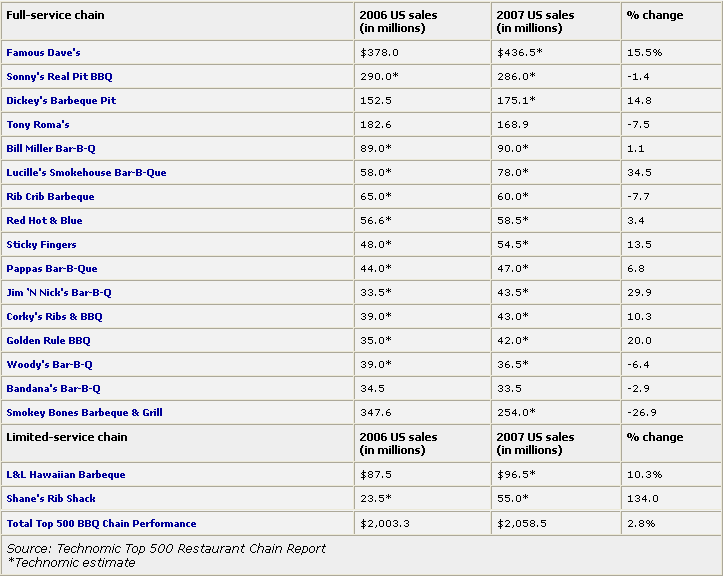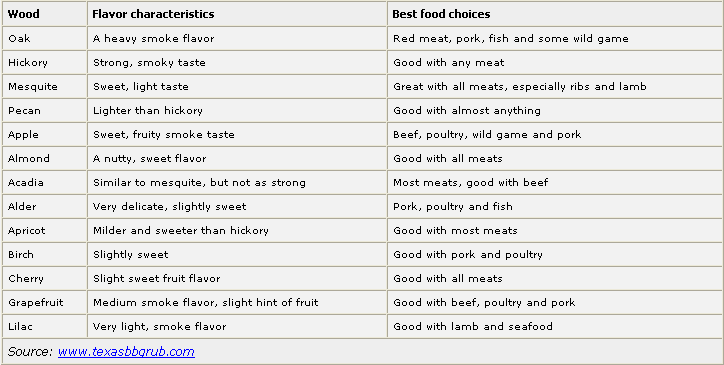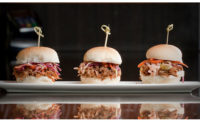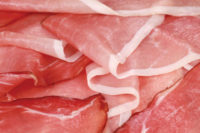Americans’ long love affair with all things barbeque dates back to the days of cowboys in the late 19th century, tenderizing their meat for hours over the fire. In fact, few things seem as American as barbeque, even though it likely originated with the Taino Indians or French. Regardless of its birth place, it’s little wonder that barbeque has a place on most restaurants’ menus and Americans’ grills.
“It’s a type of cuisine that is likely to always be in favor — a perennial favorite if you will,” says Annika Stensson, media relations manager for the Washington, D.C.-based National Restaurant Association. “Especially during the summer months, BBQ is a tradition that isn’t about to change. Flavor profiles may expand a bit with the times and incorporate more exotic flavors and ingredients, like chipotle-flavored, BBQ-bison steak or something like that.”
To attract even more consumers, some barbeque restaurants have broadened their menus to appeal to more customers — and their physical appearance to appear more like sports bars and themed restaurants.
With restaurants like Smokey Bones Barbeque and Grill, which feature slow-smoked, traditional barbeque along with chicken, burgers, fish and salad, it’s been a relatively successful initiative. This approach has its limits, though, as last spring Darden Restaurants closed its 54 Smokey Bones restaurants and this January sold the remaining 73 units to Sun Capital Partners Inc., a private investment firm.
“Barbeque restaurants need to focus on what they are, not what they want to be,” says Darren Tristano, executive vice president of Technomic Inc., a Chicago-based research and consulting firm for the food service industry. “The further they move away from barbeque, the less relevant they become to customers.”
According to Tristano, barbeque restaurants have seen their fair share of ups and downs recently, which resemble the current trials and tribulations of the Mexican restaurant category. He notes that according to Technomic's data, BBQ chains only grew sales by 2.8 percent, which is on par with the research firm's 2007 industry reported growth rate of 2.9 percent.
“Several chains are continuing to grow, and others are having problems,” Tristano says. “We’ll find that in 2007 the category was relatively flat as a whole, but when you take out the chains with significant ups and downs the industry is not doing so bad.”
For example, Smokey Bones dropped 27 percent in total sales last year because of its restaurant closures, while the West Coast’s Lucille’s Smokehouse Bar-B-Que grew 34 percent and added restaurants, according to Technomic’s data. Famous Dave’s and Sticky Fingers also did well by growing 15 percent and 13 percent respectively.
What's old is new again?
With so many choices available to consumers, it seems like there aren’t a lot of barbeque flavors and dishes that haven’t already been tried. But barbeque sauces remain a main vehicle for flavor experimentation, with restaurants adding honey, guava, citrus, pineapple, tamarind, bourbon and beer to traditional sauces, reported Chicago-based Mintel International’s Hot off the Grill report from August 2006. Chipotle and ancho chile kick up spicy southwest dishes, with cilantro adding a fresh perspective to flavor combinations.Asian, Latin and Caribbean cultures also feature their own take on barbeque. As Americans try new cuisines, they are sampling the “fire beef” (bulgogi) from Korea, Chinese tea-smoked flavors, Indian spiced chicken wings baked and served with lemon yogurt sauce, Brazilian-churrasco steak, and Jamaican-jerk chicken.
American chefs are also leaning toward more homegrown regional flavors and taste combinations, such as Carolina, Texas or St. Louis styles, says Tristano. After all, baby back versus beef ribs are indeed two very different options.
The new head chef of KC Masterpiece, Richard McPeake, director of culinary for the Hearst Restaurant Group, based in Kansas City, Kan., is revamping the restaurant’s menu to feature more authentic, traditional techniques and flavors — prompting the new, proposed slogan: “Authentic BBQ tastes better.”
“In the past few years, restaurant chains have gotten away from what barbeque is, with their steamed ribs or oven-braised options,” he says. “Americans thought that’s what barbeque is. The trends are leaning back toward old pits, hickory smoke style; the focus is on the meat now,” noting that customers should taste the meat first and the rub, bark and smoke last.
McPeake says these types of changes will revitalize customers’ taste for BBQ. Already, he notes, he’s encountered a strong interest in barbeque from consumers, by instructing 7,000 students in the art of cooking barbeque, writing three cookbooks, running a barbeque contest for professional chefs and pointing out the 10,000 members of the Kansas City Barbeque Society.
“In the next two years, barbeque will be known as ‘America’s cuisine,’” he says.
Back to basics
Many barbeque restaurants have begun using smoke pits with hickory, oak, mesquite or a blend of maple and cherry woods, which need to be run by a cook. “The wood is the chef’s personal preference for flavor,” says McPeake.According to McPeake, there are few special cooking and logistical needs associated with smoked or slow-cooked barbeque. “Slow cooking is the oldest cooking style in the world — around since the days of cavemen,” he says. “It’s not rocket science but cooks need to know how the rubs and sauces complement the proteins.”
The prep work, however, takes much more time for smoked or slow-cooked barbeque. But chains have been successful in integrating the needed equipment into the restaurant dining rooms, says Tristano. Lucille’s, for instance, installs its smoking and cooking equipment in the dining area, features it and discusses its cooking methods with customers, providing intimacy to the cooking process.
For years, Chicago customers at independent barbeque and rib chains have seen their fair share of food prepared in pits, as well. “By bringing the equipment to the dining area, restaurants increase interest in their cooking process and contribute a lot to customers experiences,” says Tristano.
Indeed, barbeque restaurants have special smokers and grills that a typical restaurant would not need. But for generalized restaurants offering barbeque options, they can also utilize “flavor technologies, like artificial smoke flavoring, which are progressive, to allow for flavor additives to be very similar to ‘the real thing,’” says Stensson.
Slow-cooking meat allows it to become more moist, but the quality of the meat remains essential for a restaurant’s continued success.
“In general, barbeque continues to increase on restaurant menus,” says Tristano. “So the more variety — which could increase ‘craveability’ and drive consumers to barbeque restaurants — the better.”
BBQ: In the eye of the beholder?
One man’s idea of barbeque is roasted pork while another’s is any type of grilled food. Decoding the differences can sometimes depend on where people live. Here is a guide to regional tastes:Southwest BBQ: Rubs and Mexican spices commonly provide oomph to beef dishes.
Eastern BBQ: East Coast citizens prefer sliced or chopped pork as the main dish, with a thin, vinegar-like and peppery sauce. In the Southeast, residents want their pork served with a thicker mustard sauce.
Appalachian BBQ: Pork rules again. These dinners want their pork shredded and topped with a sweet sauce of molasses, tomatoes and pepper. Pork ribs are served with cornbread and coleslaw.
Midwest BBQ: Once again, pork is the local favorite, but beef is more popular here than in the East or Appalachia. Beef and pork ribs are common, and sauces might have a mild, sweet tomato-based sauce flavored with molasses. Dishes come with baked beans, coleslaw or French fries.
Source: Mintel International’s Hot off the Grill report

BBQ BY THE NUMBERS

GRILLING GOES NATURAL
First, it was the campfire, then the hot coals of charcoal, outdoor grills, brick or metal ovens, and now smoking wood again. All methods are used to barbeque meats and poultry, but wood is once again a natural choice for restaurant chefs looking to envelope foods as diverse as meat, vegetables and fruits with unique flavors.In essence, woods are burned with coals to create an interesting flavor through the smoke that is produced. As an added benefit, this cooking method eliminates the need for added fat, salt or sugar due to the interesting flavor combinations caused with various woods. Hardwoods, such as the woods of certain fruit and nut trees, work the best for grilling. But chefs can choose from a number of woods — and rubs and sauces — to add unique flavors to their grilled product. Here is a look at the flavor characteristics of various woods:



